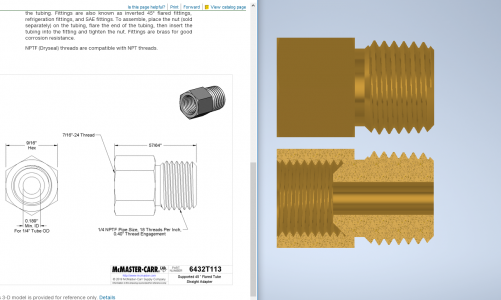- Joined
- Mar 3, 2020
- Messages
- 195
How would you best measure the angle of say the taper on the inside of a female flare fitting? About 3/8" bore ID.
Thanks
Thanks

An instructive video. Rather than go through the math, I will opt for drawing it out in SolidWorks (or other parametric CAD program). After setting the known constraints and dimensions, the desired dimension pops out as a driven dimension. When setting dimensions is production drawings, I would specify a ball as a metrology tool for Q.C. accurately assessing the part geometry.
Some of us don't know CAD.An instructive video. Rather than go through the math, I will opt for drawing it out in SolidWorks (or other parametric CAD program). After setting the known constraints and dimensions, the desired dimension pops out as a driven dimension. When setting dimensions is production drawings, I would specify a ball as a metrology tool for Q.C. accurately assessing the part geometry.
The video doesn't address the OP's original concern of accurately measuring a small angle. This is a much more complicated procedure which can be done using a similar strategy as in the video but with two different ball diameters. The math becomes considerably more difficult but the SolidWorks approach will handle it nicely. However, when dealing with small features, even a micrometer accurately measuring to .0001 isn't sufficient to accurately measure an angle.
IMO. the best approach is to use bluing with mating parts or machined go/no go gages. With careful work you should be able detect surface deviations on the order of a tenth of a thousandth which is probably good enough for most purposes.
Then you best know mathSome of us don't know CAD.
